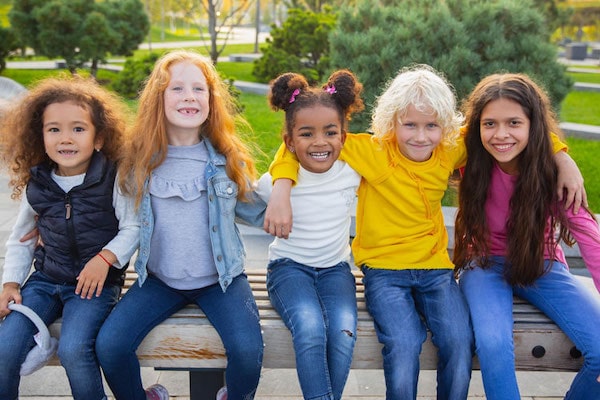Ever wonder how your child responds in social situations or amongst their peers? Now that the new school year is in full swing this may be a great time to see if your child needs any help with their social communication.
Table of Contents
The Three Communication Styles
There are three common types of communication styles: passive, aggressive, and assertive communication. Below you’ll find a brief definition of each style.
Passive Communication
Passive communication is when you typically avoid communicating your own opinion and feelings in a conversation and allow the other person to make decisions. Children may often appear soft-spoken, have poor eye contact, and will allow others to lead.
Aggressive Communication
Aggressive communication is when you tend to vocalize your thoughts and opinions with little to no regard for another person’s needs or feelings. When a child displays aggressive patterns, they may frequently interrupt others, become easily frustrated in conversation, and may exhibit and unwillingness to compromise.
Assertive Communication
Assertive communication is when you vocalize your thoughts and opinions while encouraging and respecting others thoughts and opinions. Children with natural assertive abilities tend to have an easier time making compromises, will listen and take turns speaking, and will often make good eye contact.
Identifying Your Child’s Communication Style
Now that children are having consistent social interactions during school or through extracurricular activities and play dates, take a moment to observe your child’s communication skills and provide them with guidance when possible. If your child tends to be a passive individual, you may be concerned whether they are being taken advantage of and not standing up for themselves when needed. On the other hand, if your child tends to be more aggressive you may be concerned that they could be overbearing in social settings and unintentionally seem like a bully. The hope is that your child is an assertive communicator, and someone who communicates in a confident, but kind manner toward peers. Although not all children are naturally assertive, it is a skill that can be learned.
Encouraging Assertive Communication
If you want to improve your child’s assertive skills, start by encouraging them to make eye contact in their conversations with you and others. Modeling is also a powerful teaching tool so be sure to model assertive behaviors around your children; that will be a factor with how fast they pick up and apply these skills in their own interactions. Another great way to increase assertiveness is by encouraging them to make I-statements about their thoughts and feelings while teaching them to ask others for their perspective. Being supportive and having frequent conversations with your child is also a great place to start.
There are many ways to improve assertive communication patterns and to assess for your child’s current style. If you want more information about communication skills then please contact Dr. Jenna Del Valle for additional support through child therapy.


